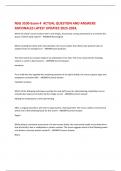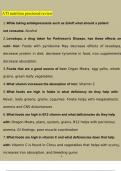Resume
Summary Risk Management in Financial Institutions (Master TEW/ERB, Prof. T. Wouters)
- Établissement
- Katholieke Universiteit Leuven (KU Leuven)
This is an extensive summary/overview of all the learning materials covered in the classes of 'Risk management in financial institutions' taught by Prof. Tim Wouters. The summary includes all theory as well as several examples and exercises. It is based on the Professor's slides, all the informatio...
[Montrer plus]












